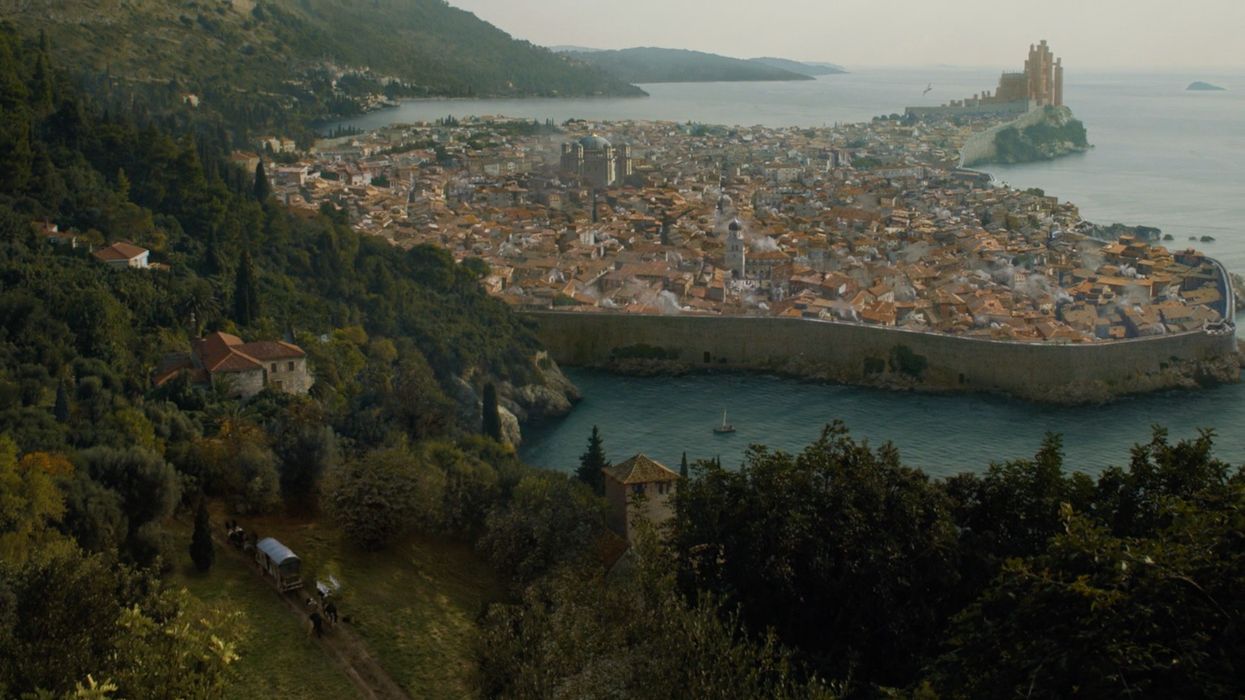Establishing Shots: Examples and Uses of the Camera Angle
Establishing shots are used everywhere, from movies to television to documentaries and the news. But how can you take a boring and overused shot and make it interesting again?

What is an establishing shot?
The age-old lesson in film and television is "show, don't tell." This is especially true as you switch and establish scenes within a larger production. You always want the audience to know where they are and what they're looking at. That's where establishing shots come into play.
But what is an establishing shot? And how does it fit into the array of different shot types, angles and movements that directors use in their films?
Today we're going to go over the establishing shot definition, look at a few examples, and brainstorm ways we can spice up the generic camera angle.
Let's go.
Establishing shot definition
An establishing shot is a wide shot that helps the viewer gain knowledge over the time and location of a scene.
Why are establishing shots important?
We all know exposition is important to get across to the audience. When you're building a world or just operating in the one we see every day, people want to know where things are located and how that affects the story. You could have your characters gab all this or you could just set up a shot and drop a chyron in. Or even have a plane fly on a little red dot between places.
Establishing shots work as a shorthand for filmmakers to communicate ideas to the audience without confusing them.
Establishing shot examples
There are many great establishing shot examples within film and television. Shows like Game of Thrones are full of them. When you're traveling around Westeros it pays to know where you are, and if you're a fan of the show, you can pick out Winterfell from the Iron Islands just by the shape of their castles.

An example of an establishing shot from Game of Thrones.
HBO
You can also use these shots in space, like Guardians of the Galaxy does to tell us which planets we're visiting as we galavant all over the place with Starlord and crew.
Here, the establishing shot is used to show the scope of space and to put us in a world we have never seen before. We can marvel (no pun intended) at what these different cultures and races have achieved but also get lost in the pulpy world put forward.
But what are some other ways to utilize this camera angle?
Creative ways to use the establishing shot
One thing I have always admired about the Harry Potter movies is how they tell stories that take all school year. But when you have that much time to cover, you need to let the audience know how the story is progressing. Enter the establishing shot.

Examples of establishing shots in Harry Potter.
Harry Potter: Hogwarts Establishing Shots
And it's not only about the passing of time, but you can also add to the magic of the world through these shots too. The various Potter directors use them to set up story elements like the castle, the Triwizard tournament, and even to set the stakes in the final battle for Hogwarts.
The Shining • first scene 1080p
If you want to amp up four establishing shots, consider trying to find angles with lead-in lines. These can be roads, rivers, or pathways that direct the audience's eyes toward what you want them to look at, like Stanley Kubrick does in the opening of The Shining.
LOTR The Return of the King - Minas Tirith
Establishing shots are usually really wide, so you can add details in the foreground to challenge the audience to take everything in. This also will add layers of depth to the image and make it more beautiful. I find that these layers are especially useful in epics. Like this shot of Gandalf headed toward Minas Tirith. He's kept in the foreground to give scope and balance to the frame.
The Tree of Life #6 Movie CLIP - Past vs. Present (2011) HD
Finally, try framing your establishing shot with another natural element. Terrence Malick does this a lot in Tree of Life. There's the doorway on the beach and in the clip below he even uses Sean Penn's window as an establishing shot into his memory.
What's next? Check out other wide shots!
Think of some of the most jaw-dropping scenes and sequences you’ve ever seen. Chances are, a number of them were only made possible by wide shots.
Filmmaking is hard, really hard. At its core, it’s all about creating an emotional experience and capturing the audience’s imagination. You have to create a compelling world, fill it with complex characters, and develop a real sense of atmosphere. Simply put, you need some scope.
Click the link to look at some of the best wide shots and make sure to add them to your shot list.











